“I’ve recently been inspired to re-imagine some of the great paintings of the past but with the aim of representing a more diverse range of individuals.” – Selina Pope
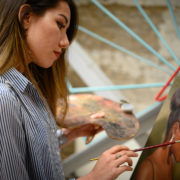
Soliciter & visual artist Selina Pope re-imagines classic portraits that represent the diverse faces of modern Britain.
As a child, Selina Pope fell in love with art when her Father handed her a colouring book to keep her entertained and quite possibly distracted for some time. Unknown to him, these moments would become some of Selina’s most cherished memories of her childhood, and this hobby would grow into a beloved passion that has become a significant part of her adult life.
Selina says, “At school, I became more serious about art and took part in some courses where I learned to oil paint. Since then I’ve been doing art on and off throughout my life, mostly because I enjoy it as a creative outlet.”
Selina began to take painting more seriously at secondary school and although she wanted to pursue art at a high level of study, due to the difficulties of being economically sustainable as an artist in this day and age, she decided to go down a more secure route. Selina believed that even if it wasn’t the most desirable cause of action, studying a degree that would guarantee her paid work, whilst devoting the time she had to spare to her artwork would mean the pressure of trying to keep afloat wouldn’t skew her love for painting and drawing.
Selina graduated from the University of York with a degree in Politics, Philosophy, and Economics. Eventually leading her down the Law path, making her a cooperate lawyer by day and an artist by night… and every available weekend.
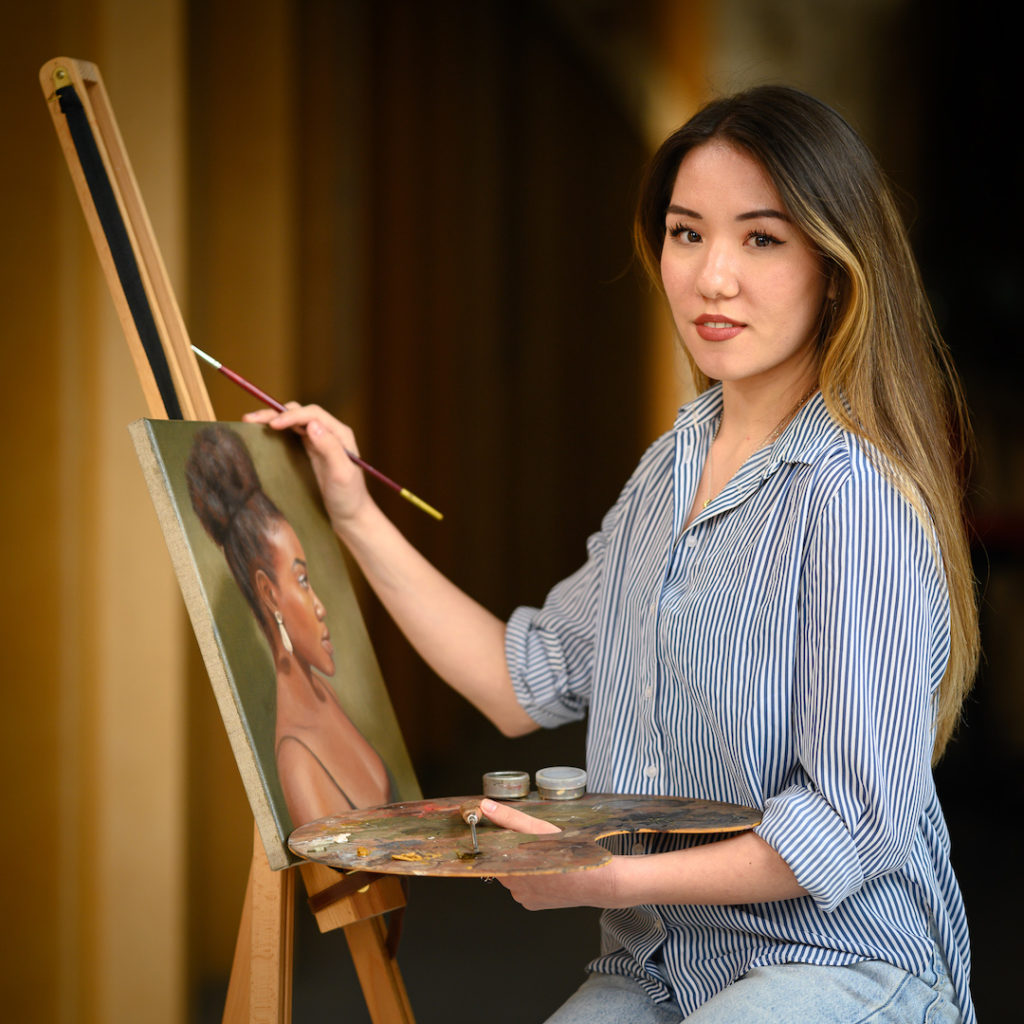
2020 marked a significant turning point in Selina’s artistic journey. With everyone spending time at home, Selina took the opportunity to devote the time over lockdown to focus on portraiture. She describes portraiture as the ability to capture the true essence and soul of a person. Although she is still in the early stages of her career, Selina’s artistic voice is clear, her message of the importance of identity and representation is consistent throughout her work.
Representation and identity play a huge part in Selina’s creative process and those who view her work are encouraged to question the way that we see others and ourselves in art. Selina says, “when we look at the great masterpieces of the past there is, more often than not, a huge lack of diversity, and where non-Western sitters are portrayed, their portrayal is rarely favourable (e.g. they are often portrayed as servants or in the background of paintings)“. She continues, “In light of this, I’ve recently been inspired to reimagine some of the great paintings of the past but with the aim of representing a more diverse range of individuals.”
Selina Pope’s passion to learn and develop as an artist has helped her establish herself as a key voice of her generation. One of her most popular pieces, ‘Life Goes On’ can be found displayed at The Royal Scottish Academy and The Royal Society British Artist’s Annual Exhibition at the Mall Galleries right now. She is continuing her re-imagined classic series with her take on pieces like ‘Lady with an Ermine’ (da Vinci) and pushes herself to use both graphite and oil to test her abilities and evolve as a portraiture artist. Check out our interview below and follow her Instagram, for the latest updates on where to find and buy her work.
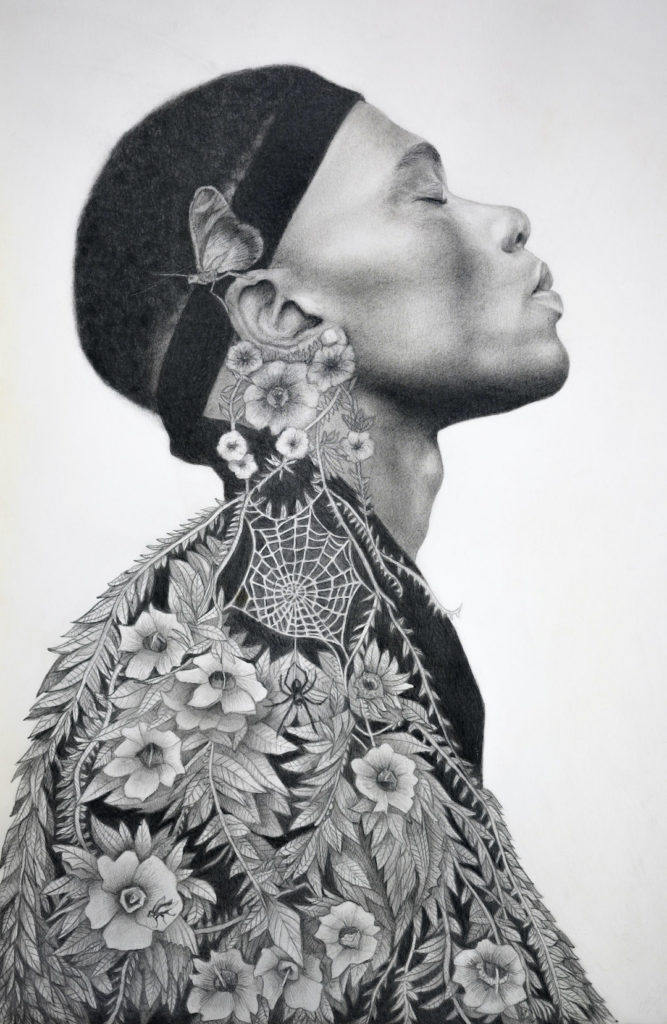
Tell me a little about yourself?
I’m twenty-five years old and grew up in Aberdeen, Scotland. I currently live and work in London as a solicitor, but I try to draw and paint as much as I can in my spare time as it’s my main passion outside of work. I’m half-Chinese and half-English so, being of mixed-race heritage, identity is a reoccurring theme in my work.
What inspired you to be an artist?
It seems cliché to say but I’ve been drawing as early as I can remember! Some of my earliest and fondest memories are of my Dad drawing me animals and getting me to colour them in to keep meentertained. At school, I became more serious about art and took part in some courses where I learned to oil paint. Since then I’ve been doing art on and off throughout my life, mostly just because I enjoy it as a creative outlet. I’ve started taking it a lot more seriously though, since I took part in a two-week painting course in Florence, Italy. Following this experience, I decided to rent a small studio space not far from my home, which has helped me to become more committed to my art.
How did Covid-19 affect your work?
Regarding my artwork, it made things difficult in that I wasn’t always able to visit the studio to paint, so I had to adapt my focus more towards drawing which I could do from home. On the flip side, it’s given me more time to dedicate to my art, both because there are fewer opportunities to socialise right now and because I’m working from home, meaning when I have a spare evening it’s much easier to fit in a couple of hours to work on my art with my daily commute removed.
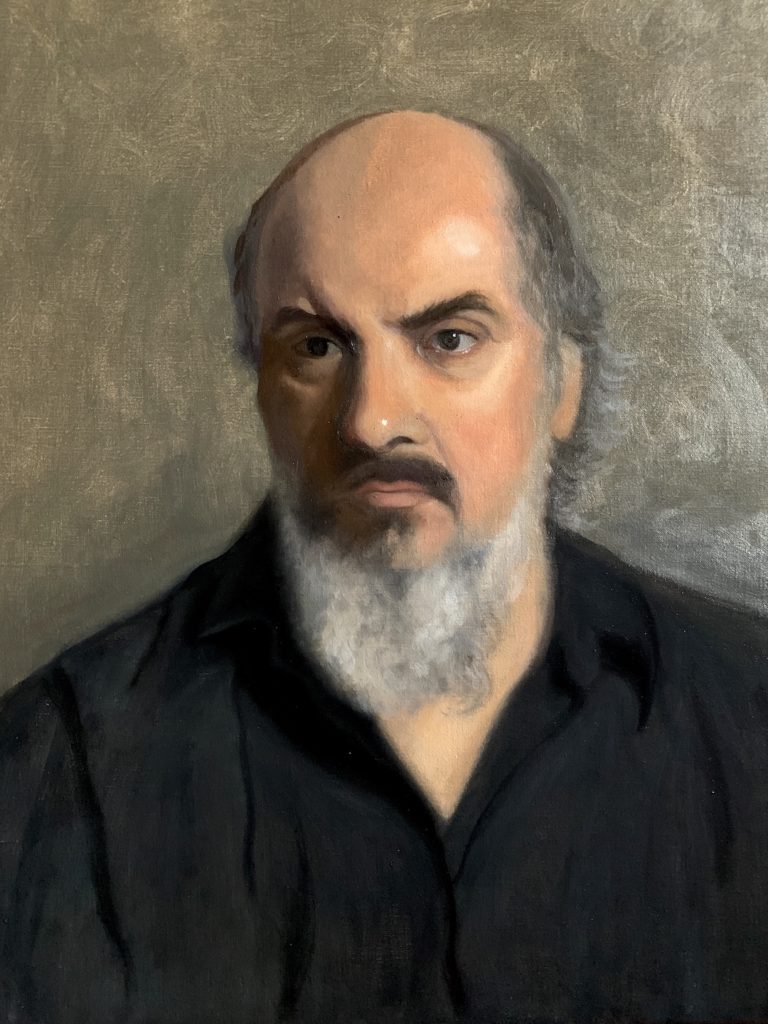
What has been the biggest challenge in your journey so far?
The biggest challenge has been balancing time between my career and making time for my art. I haveto be quite precious with my time to make sure that I am able to dedicate enough time to my art, whether it be personal projects or getting commissions done on time, which is not always easy, especially when I have competing work deadlines and also need to make time to see friends and family.
A lawyer by day and an artist by night…Some of the greatest artists in history also had dual identities in their lives and work. How does being a commercial lawyer influence you as an artist?
Working as a lawyer has given me lots of useful skills e.g. communication, writing contracts, time management, and negotiation skills, which has really helped my navigation of the art world so far.
Regarding my art itself, my career as a lawyer makes up an important part of my life so I naturally find myself exploring related themes and concepts in my artwork from time to time, such as the depiction of the modern working woman. I’m currently working on a new self-portrait in which I’m exploring this theme. Specifically, I’m considering how women were historically depicted in art, often sexualised and depicted for aesthetic purposes, versus a new portrayal of the multi-faceted modern woman – having the choice to be portrayed and viewed in a different way, both in art and in society generally.
You’ve expressed how important identity means to you on a personal level. How do you explore this in your art?
When we look at the great masterpieces of the past there is, more often than not, a huge lack of diversity, and where non-Western sitters are portrayed, their portrayal is rarely favourable (e.g. they are often portrayed as servants or in the background of paintings). Growing up learning about art, as a half-Chinese individual, I rarely came across anyone that looked like me in many of the masterpieces I admired so much.
In light of this, I’ve recently been inspired to reimagine some of the great paintings of the past but with the aim of representing a more diverse range of individuals. Using traditional techniques e.g. the limited palette (where all colours in a painting originate from a small handful of colours), I’ve been recreating my own versions of masterpieces like ‘Girl with a Pearl Earring’ (Vermeer) in which I reimagined my friend Benedicte as the sitter. I’m currently reimagining ‘Lady with an Ermine‘ (da Vinci), where I’m painting my friend Jon with his sharpei puppy (in place of the ermine), wearing the traditional Agbada dress from where his family originates in Nigeria. I’m making a conscious effort to use friends and family in these paintings which has made this project particularly meaningful for me, as I love the challenge of trying to capture their likeness, and representing aspects of their identity, in a painting.
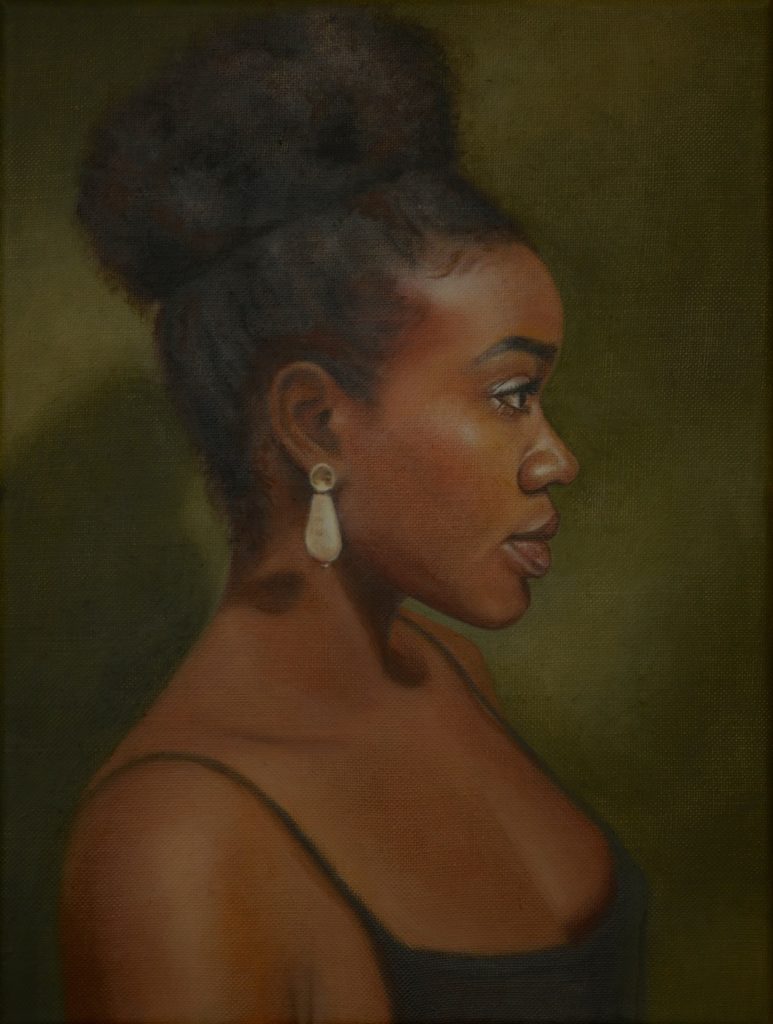
What is the purpose of re-imagining classic works and re-creating them to represent a more diverse version of beauty?
I see art as a means of communicating and spreading ideas throughout society, whether that be for pure enjoyment, or to provoke discussions and emotions. Therefore, if certain individuals never see themselves in this form of communication, the message we are sending is that only people who look a certain way, or are from certain backgrounds, deserve to have their experiences and narratives shared. This is especially emphasised if what we consider to be ‘the greatest masterpieces of our time’ rarely include anyone from diverse backgrounds. I think it is important to reflect on this issue – whether by simply being aware of it, or by taking part in projects such as the reimagining of these works. After all, if we fail to represent a diverse range of people not just in art, but in media, the workplace, politics etc., this inadvertently erases a large portion of society’s experiences.
What are some of the highlight/successes you’ve had most recently?
I was recently accepted into my first major UK open exhibition – the Royal Society of British Artists’ 2021 exhibition, taking place at the Mall Galleries (London). This was a big step for me in my artistic career, asit was the first time my art had been recognised by professional artists. Previously, I had mostly done artfor fun, and received support from friends and family. Since then I’ve also been lucky enough to havemy work selected for the Royal Scottish Academy’s 2021 exhibition – especially meaningful for me, having grown up in Scotland.
What would be your advice to other creatives, struggling to maintain creativity and motivation in lockdown?
In my opinion some of the most meaningful art is based on difficult experiences and the exploration of the emotions associated with those experiences. Lockdown has been an incredibly hard time for everyone and is no exception for creatives. It may help to try to use the experience as a catalyst for the next project – the associated fears and challenges could be channelled into the art itself and in doing so may also provide an emotional release. I would say, try to use your art as a tool to express and explore these emotions – not necessarily with an audience in mind but for yourself to begin with and you may be surprised at what beautiful things you create. Most importantly though, I think creatives (and everyone in general) should not put too much pressure on themselves right now – we’re all going through a lot, mentally and physically, so it doesn’t need to be a time where we create our best work or have a creative breakthrough; focusing on ourselves and self-care should be the priority.
Check out the GUAP Arts & Culture section, to discover new art, film, and creative individuals.





![ZINO VINCI’S ‘FILTHY & DISGUSTING’EP BRINGS YOU TO THE CORE OF THE ARTIST [@ZinoVinci]](https://guap.co/wp-content/uploads/2023/10/Zino-4.jpg)

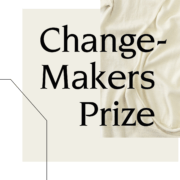



![Remel London’s [@Remel_London] “Mainstream” is a must attend for upcoming presenters!](https://guap.co/wp-content/uploads/2017/02/REMEL-LONDON-FLYER-FINAL-YELLOW-COMPLETE-1.png)